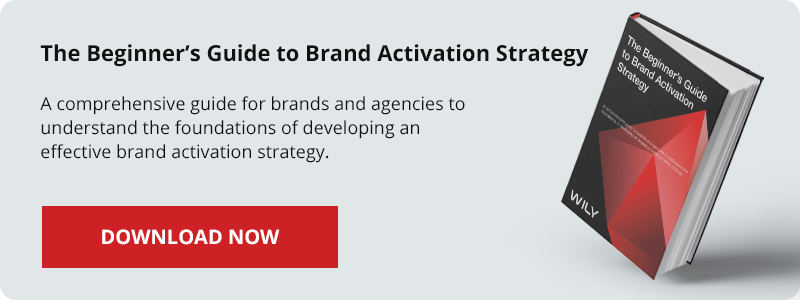Science Daily claims that a staggering 90% of all the data in the world has been generated over the...
4 Risks of Not Tracking Your Engagement Campaigns
![]()
Customer engagement is at the heart of any successful brand. As engagement becomes increasingly important to measure, and more value is put on campaigns that support this, it’s vital for marketers to track the success of their efforts. Data-driven marketing offers industry leaders the opportunity to increase their market growth while shaping customer satisfaction through engagement campaigns. Effective engagement campaigns require securing quality data to determine the best marketing strategies.
It’s a simple equation: Customer Data + Customer Engagement = Sales
Before launching a customer engagement campaign, marketers must integrate data that arrives from internal and external sources, which can be challenging. Clustered or inconsistent data must be cleaned up and integrated effectively before it is used, which requires advanced technology and the right strategic approach.
How then, can marketers effectively integrate data to position their engagement campaigns for success? And what are the risks of failing to do so?
Why you need a data tracking strategy
As much as customer engagement is a broad, ever-changing concept, what’s even harder is your ability to measure it. It’s easy to analyze whether customers engaged with a singular email, social post, or other piece of content but it’s much more determining whether your overall customer engagement strategy is resonating with your target customers. Qualitative data comes from a number of places such as online reviews and customer feedback surveys. Quantitatively, you can measure customer lifetime value (CLTV) and average order value (AOV); both of these calculate what a customer is worth to you so you can make better marketing and customer acquisition decisions.
The importance of tracking your engagement campaigns is increasingly important for a number of reasons. Studies show the benefits of tracking data and analytics. For example,
- More than half (59%) of managers say that using data analytics is helping their business to gain competitive advantage
- Analytics are increasingly being used to drive customer engagement; with stronger engagement from data-mature companies
- The longer the history of data analytics, the higher the number of data sources used to engage customers
Organizations that embrace data strategies are able to better integrate on and offline data, to create a holistic customer view.
Now that we understand the importance of a data strategy, let’s discuss some of the risks of not tracking your engagement campaigns:
Wasted Marketing Dollars
 As we just mentioned, tracking your engagement campaigns provides data that will impact ongoing marketing decisions. By ensuring relevancy in all offers and communications, as you have data to back up your findings from test and live campaigns will save you money in the long run. Additionally, this data can improve your relationship and spend externally as well. By tracking and sharing certain data points with vendors, you can set them up for success as well.
As we just mentioned, tracking your engagement campaigns provides data that will impact ongoing marketing decisions. By ensuring relevancy in all offers and communications, as you have data to back up your findings from test and live campaigns will save you money in the long run. Additionally, this data can improve your relationship and spend externally as well. By tracking and sharing certain data points with vendors, you can set them up for success as well.
Each and every touch point should be analysed for greater understanding. You’ll gain new insight into how and when people engage, and on what channels. This will provide greater opportunities for targeting similar promotions. Data is more than collecting information, but monitoring it and acting upon your discoveries.
Lack of Brand Trust
Building trust with customers. Better data protection measures (including GDPR) will enable greater consumer control. This helps you to deliver messaging to the right place, i.e. as stated by the customer’s communication preferences.
When ingesting data, you will want to capture, aggregate, and integrate data from multiple sources to garner new customer insights and deepen your relationships. Best examples in practice would possibly be a mix of loyalty programs, reward cards, code-enabled offers for transaction tracking, newsletters for leads and prospects identification, physical information packets, web registrations, cookie-backed online customer profile building, making the latter available for your call centers and PoS, establishing an updated customer lists, and/or purchased demographic data.
Slow to React to Trends
Another consequence of not tracking your engagement campaigns is missing key consumer trends as they happen. Smart algorithms and sophisticated analytics are a must-have in today’s marketing toolkit. With advanced analytics, marketers can increase customer engagement by segmenting customers based on their lifestyles rather than demographics. This allows marketers to target customers more efficiently and effectively.
Shifts in customer demand can be hard to spot — for humans. But data signals can provide notice in advance that customer sentiment is changing, which can keep sales and marketing teams in the hunt if they respond accordingly. With the right technology solution, companies can become more adept at spotting subtle shifts in customer behaviour and demand, responding in a way that resonates in the marketplace.
By employing cutting-edge technology, marketers can evolve their strategy as customer demand changes. Instead of sifting through data alone for clues to build a strategy, this gives marketers the power to personalize customer outreach, automate processes and shorten the sales cycle, enabling a data-driven, future-focused campaign.
This allows your brand to act fast and react to consumer behaviour and market trends at the right time.
Missing Key Experiences in the Customer Journey
Using analytics, marketers can engage customers through personalization, creating experiences based on data that provide clues to customer interests. Hyper personalization, based on advanced data, enables marketers to respond to customer signals with highly targeted, relevant offers and promotions. By tracking engagement campaigns, marketers are more likely to achieve their goals.
Advanced technologies like artificial intelligence (AI) can help marketers take the friction out of interactions with the brand, which improves sales. Chatbots, for example, allow customers to interact with brands on their own timetable.
By staying on the pulse of what your customer’s are searching for, their wants, needs, and desires, helps to fill the gaps in your customer journey.
In Conclusion
Overall, tracking your engagement campaigns can help:
- Ensure relevancy in all offers and communications, as you have data to back up your findings from test and live campaigns.
- Build trust with customers. Better data protection measures (including GDPR) will enable greater consumer control. This helps you to deliver messaging to the right place, i.e. as stated by the customer’s communication preferences.
- Enable your brand to act fast; reacting to consumer behaviour and market trends to deliver at the right time.
- Create a frictionless customer journey that improve consumer experiences with your brand.
By using insight to improve your connection with customers, you can turn data into a bottomline advantage.
eBook: The Beginner’s Guide to Brand Activation Strategy
 “Brand Activation” is the art of driving consumers to action through brand sponsored interaction and experiences. It’s about bringing brands to life and forming long-term emotional connections with consumers. This book will assist brand marketers and agencies in developing an engaging brand activation strategy. It will serve as a resource for marketers looking to enable activations in the digital-first era.
“Brand Activation” is the art of driving consumers to action through brand sponsored interaction and experiences. It’s about bringing brands to life and forming long-term emotional connections with consumers. This book will assist brand marketers and agencies in developing an engaging brand activation strategy. It will serve as a resource for marketers looking to enable activations in the digital-first era.
WHAT’S INSIDE:
- Advantages of Brand Activations
- Strategies for Implementing a Brand Activation
- Processes for Executing Engaging Brand Activations
- Methods for Measuring Brand Activations
- Plus, So Much More!




